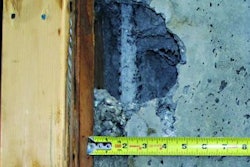Construction employment increased in 120 out of 337 metropolitan areas between May 2010 and May 2011, declined in 162 and stayed level in 55, according to a new analysis of federal employment data released today by the Associated General Contractors of America. Association officials noted that local employment data reflects the fact that overall construction employment has been unchanged for much of the past year.
"While construction employment has stopped plunging, any sign of a recovery remains spotty at best," said Ken Simonson, the association's chief economist. "The close to even split between areas adding and losing jobs is a reminder that for every market doing well, there is another market that is still hurting."
Dallas-Plano-Irving, Texas, again added more construction jobs (5,600 jobs, 5%) than any other metro area during the past year while Haverhill-North Andover-Amesbury, MA-NH, added the highest percentage (22%, 800 jobs). Other areas adding a large number of jobs included:
- Chicago-Joliet-Naperville, Ill. (4,600 jobs, 4%)
- Warren-Troy-Farmington Hills, Mich. (3,700 jobs, 11%)
- Houston-Sugar Land-Baytown, Texas (2,900 jobs, 2%)
- St. Louis, Mo. (2,700 jobs, 4%)
The largest job losses were in Atlanta-Sandy Springs-Marietta, Ga. (-7,400 jobs, -8%); followed by:
- Las Vegas, Nev. (-7,400 jobs, -16%)
- New York, N.Y. (-6,700 jobs, -6%)
- Riverside-San Bernardino-Ontario, Calif. (-5,300 jobs, -9%)
Lewiston, ID-WA (-18%, -200 jobs) lost the highest percentage. Other areas experiencing large percentage declines in construction employment included Las Vegas, and Bend, Ore. (-15%, -500 jobs).
Association officials cautioned that construction employment was unlikely to expand as long as economic growth remained relatively restrained. They said demand for new office buildings, retail facilities and lodging would remain depressed as long as current vacancy rates remain high. At the same time, demand for infrastructure and other publicly funded projects was declining for the first time in years amid the winding down of stimulus projects and budget cuts.
"Some in Washington never met a regulation they didn't like and others never found a penny they didn't want to pinch," said the association's chief executive officer Stephen E. Sandherr. "Together that makes for a bad way to boost employment and a great way to stifle the private sector and neglect critical economic infrastructure."
View construction employment figures by metro area and rank.

















